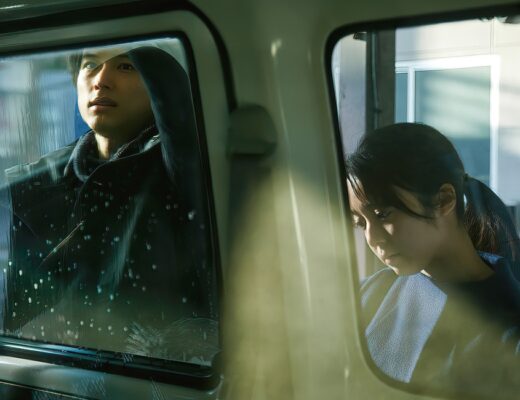Capturing the fuzzy conceptual and materialist fluidity of modern globalization has become something of a go-to subject for contemporary non-fiction film. It’s a huge, even abstract, phenomenon with almost limitless possibilities and variations to explore. Sean Wang’s A Marble Travelogue is the latest entry in this burgeoning subgenre, exploring the journey of the eponymous material from quarries in Greece to factories in China, where it is repurposed as sculptural objects for the West and sent back to Europe. It’s a fascinating ouroboros of goods and services stuck in a never-ending chain of cultural exchange.
Wang begins his tour with a series of discrete vignettes that only begins to crystallize into something approaching a cohesive whole with the benefit of hindsight. We are first introduced to Mariana and Sophia Erotokritou, a pair of Greek twins in their early 20s who speak fluent Mandarin and record videos for their social media channels. Eventually, the film moves on from them to the more physical reality of marble, with scenes set in quarries as men inspect huge blocks of the stuff and talk shop. Shots of the Piraeus Port in Athens give a sense of the massive scale involved in this operation, as the camera sails with a huge cargo ship from Greece towards Quanzhou Port in the Taiwan Strait. Once on the Chinese mainland, Wang continues to seek out and interview various peoples who are directly involved with the marble’s trajectory from natural object to consumer good. There’s Congda Zhen, dubbed the “National Crafts Artist” by the government and who runs the Palace of Art & Sculpture. It’s a big business that involves copying Greco-Roman sculpture and selling the simulacra to clients around the world. Zhen also makes his own original works, and there is a fascinating, albeit barely explored, tangent about the artist selling his work under different names depending on the country he’s doing business in. He relays a story about stumbling across one his pieces while abroad and confronting the realization that it’s being displayed under a pseudonym, meaning that once he dies no one will recognize his name. Eventually, environmental regulations and a European economic depression make it impossible for him to continue his business in China, and we leave him as he is deciding where to move his operations in search of cheaper labor. Suggestively, Wang follows these sequences with a brief portrait of a poor family working in a factory that repurposes marble dust and waste into other materials. Wang films the family — a mother with several young children — at the factory and at their home, where he asks a young girl if she is concerned about her health. She says she’s not, but lets slip a cough as she nods and smiles.
Less successful are the intermittent snippets of the Erotokritou twins, who reappear with some regularity throughout the film. After their early scenes in Greece, Wang catches up with them some time later as they have moved to China. Officially “cultural ambassadors,” they’re involved (along with their well-connected lawyer father) in facilitating tourism for rich Chinese citizens to travel to Greece. It appears to be on the up-and-up, but the patina of some kind of financial scheme hangs over the proceedings — whatever the case, this is a big business. Wang seems to think these young women are more interesting than they actually are, and while it’s likely he intends their journey to mirror that of the marble, perhaps conflating the two in a dialectic, it plays like a rhetorical gesture at best. Brief detours occasionally bring to mind the work of Jia Zhangke, particularly his film The World, arguably the key work of 21st-century modernism. And Wang is most successful with the brief snapshots that he uses to flesh out this journey — hypnotic close-ups of statues being crafted, sequences of bodies at work, a rollercoaster ride through reproductions of ancient Grecian ruins. There’s no denying that Wang has a keen photographer’s eye, but the structure of A Marble Travelogue becomes too diffuse and disorganized. Still, it’s a fascinating subject, and Wang has crafted a notable if imperfect addition to our understanding of this complex, confounding globalized economy.
Published as part of Art of the Real 2022 — Dispatch 1.







